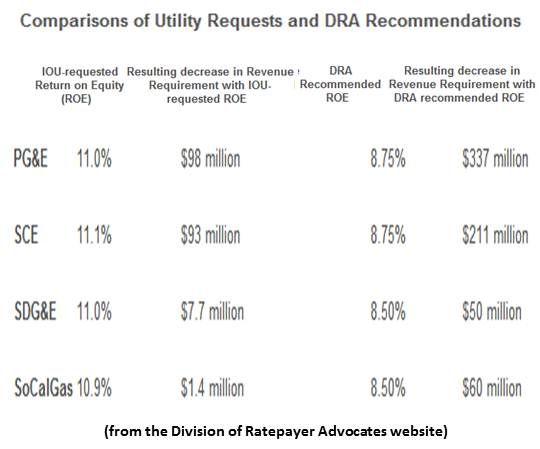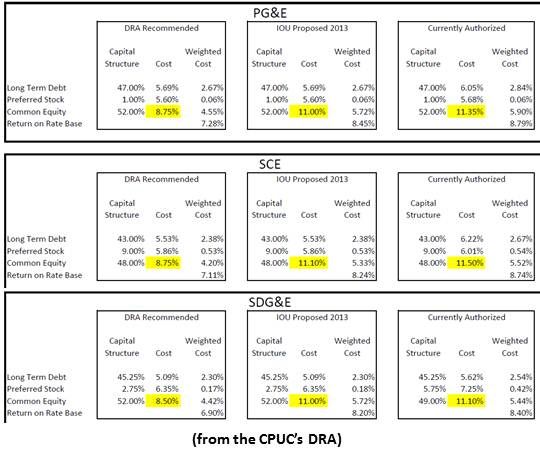Californians are being asked by their investor-owned utilities (IOUs) to keep paying pre-recession level bills. The ratepayers' advocate says the utilities should be returning more to their customers.
The Pacific Gas and Electric (PG&E) request for an 11.0 percent Return on Equity (ROE), the Southern California Edison (SCE) request for an 11.1 percent ROE, and the San Diego Gas and Electric (SDG&E) request for an 11.0 percent ROE “far exceed the companies’ revenue needs and market standards,” according to Acting Director of the state’s Division of Ratepayer Advocates (DRA) Joe Como.
Como brought evidence before the California Public Utilities Commission (CPUC), within which DRA is an independent consumer advocate, to validate his contention. The PG&E ROE and the SCE ROE should be 8.75 percent and the SDG&E ROE should be 8.50 percent, Como argued at the CPUC’s recent Cost of Capital proceeding. Interest rates and other capital costs are much lower than they were in 2007, when the Commission set the PG&E ROE at 11.35 percent, the SCE ROE at 11.50 percent and the SDG&E ROE at 11.1 percent.
DRA “does not object,” Como argued, to the “proposed capital structure or forecasted cost of long-term debt.” But, he said, “the utilities want to charge customers Rates of Return for their investors that are out of line with the current market conditions.”
IOU filings with the CPUC argue they have a big need for capital but the risk their investors must bear is higher than that of alternative investments. They must, therefore, pay a higher-than-average return to shareholders in order to go on building the kind of electricity generating and delivery infrastructure the state requires of them.

The DRA conclusions are based on three financial models used to compute ROE. The financial models incorporate current interest rates, risk premium, and reasonable growth forecasts. A market analysis that compared requested ROEs to 34 investor-owned electric utilities across the U.S., the DRA reported, showed that the IOUs' requested 11.0 percent and 11.1 percent ROEs are significantly higher than the median ROE of 9.9 percent.
According to DRA regulatory analyst Jerry Oh, the differences between the requested ROEs and those the DRA found adequate were $377 million for PG&E, $211 million for SCE, and $50 million for SDG&E. The IOUs, Como added, “should be passing those tens of millions of dollars in savings on to their customers.”
The SCE proposal, reported SCE spokesperson Lauren Bartlett, "would lower requested customer rates by more than $120 million."
"Taken as a whole, our request would reduce our annual revenues by about $100 million," added PG&E External Communications Chief Jonathan Marshall.
Following a extensive set of evidentiary hearings and comments beginning in September, the CPUC will issue final Cost of Capital decisions by the end of 2012 that will determine the ROEs that IOUs can earn going forward.
GTM will detail the utilities' positions on this issue in a follow-up piece.




